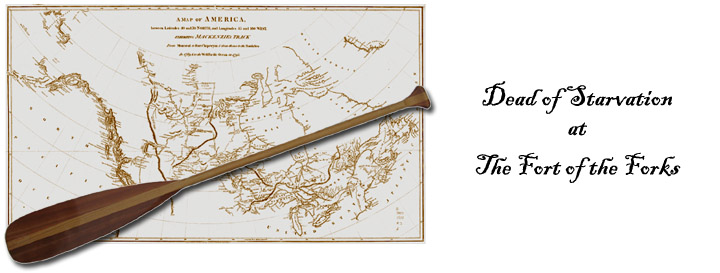

|
Life at this isolated fur trade post located several thousand kilometres from Montréal was not easy. First of all, just getting there took at least two years in the birch bark canoes that were manned by the hardy voyageurs; a trip that was surely filled at times with great adventures and dangers. Once at the post, and following the end of the brief summer trading season, a period of long silence and monotony set in, especially during the winter time. And there was always a risk of running short of food. In fact, the winter of 1810/11 was one of the most painful and
deadly. Hare became a survival food during hard times, whether
you were Native or not, and that winter, they failed. In all
likelihood, the hare were at the low point of their seven year cycle.
To
make matters even worse, the weather was very cold; so cold that the
ice on the Mackenzie River was so thick that nets could not be set
under the
ice in the hopes of catching some fish. It wasn't long before the
meagre food supplies began to run out. There was no choice but to try
to stay alive by eating the fur pelts that had been obtained from the
Native people who had come to the post and exchanged them for the trade
goods so laboriously hauled to the Forks from Montréal.
But these skins have next to no nutritional value as they were first
scraped clean of any fatty matter in order to prepare them for
trade. Wentzel related how among the local First Nation band, five
people died of starvation. At the Fort of the Forks, four people
died during the month of March from want of food. Those four
Northwest Company employees were: William Henry, the post's hunter,
Louis
LeMai dit Poudrier as well as one of his children, and François Pilon. The
Fort of the Forks was abandoned the following spring. We were not
told the nature or location of the burials of these four unfortunate
people. However, given the abandonment of the site and the
weakened condition that the survivors must have found themselves in, it
is likely that they were buried very close to the post, if not
within it. They might even have used an existing depression or
pit, such as the ice house, which was going to be abandoned in any
event. Follow
this link to read Wentzel's letter to Roderic Mackenzie describing
the loss
of four of his men. |
| Who was this François Pilon? |
Some Pilons return to the Forks of the
Mackenzie in 2002 |